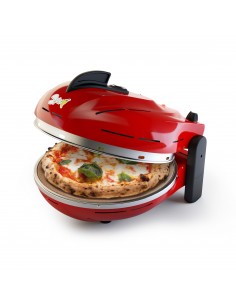- Spice
- Insights
- 2501 views
- 0 comments

Pizza is a dish that has been part of the Italian culinary tradition for centuries, but in recent times it has evolved thanks to the growing interest in alternative ingredients and the search for new flavours. In this article, we will delve into the world of alternative flours and discover how spelled, kamut and gluten-free flours can give life to delicious and original pizzas, also suitable for those who follow specific diets.
Spelled: An Ancient Cereal Revisited
Spelled is an ancient cereal that has been part of the human diet since ancient times. This grain is high in protein, fiber and minerals, making it a nutritious choice for pizza. The spelled flour gives the pizza a rustic and slightly nutty flavour, adding a touch of originality. With spelled, it is possible to make fragrant pizzas with an enveloping flavour, perfect to be enjoyed in different variations with your favorite toppings.
Kamut: A Nutritious and Tasty Cereal
Kamut is a grain native to the Near East, known for its rich flavor and pleasant texture. Kamut flour has a golden color and a silky texture, perfect for creating a pizza with a crunchy crust and a soft core. Kamut is also a source of essential nutrients, such as vitamins, minerals and antioxidants. A pizza made with kamut flour is a unique taste experience that will satisfy even the most demanding palates.
Gluten Free Flours: For a Pizza Accessible to Everyone
For those who must follow a gluten-free diet, there is a large choice of alternative flours to prepare a delicious pizza. Rice, corn, buckwheat or chickpea flour are just some of the options available. Gluten-free flours can be used individually or combined to obtain a tasty and gluten-free base. These flours allow you to create pizzas suitable for those suffering from gluten intolerance or for those who simply want to vary their diet.
The Experimentation with Alternative Grains
In addition to spelt, kamut and gluten-free flours, there are many other alternative grains that can be used to create unique pizzas. Quinoa, for example, is a source of complete proteins and can be used to make a tasty and healthy pizza. Buckwheat, with a slightly bitter taste, can give life to a rustic and fragrant base. Experimenting with these cereals opens the door to a world of culinary possibilities, where the uniqueness of the flavors is the protagonist.
Technique and Tips for a Perfect Pizza
The use of alternative flours requires some adaptation in the preparation of the pizza. It's important to balance the ingredients to get a balanced texture and flavor. Spelled flour, for example, may require a little more hydration than traditional wheat flour. Furthermore, the cooking of pizzas made with alternative flours may require different temperatures and times. Experimenting and taking note of different combinations can help you get better and better results.
The Art of Matching Ingredients
One of the beauties of alternative grain-based pizzas is the ability to create unique ingredient combinations. The combination of tastes and textures can be further enhanced by a base of spelled, kamut or gluten-free flours. For example, a spelled flour pizza could be topped off with goat cheese, zucchini and a touch of honey. Kamut could accommodate a mix of grilled vegetables and Middle Eastern spices. With gluten-free flours, you can play with a wide range of toppings, from the classics to the most innovative, to satisfy all tastes.
Cereal-Based Pizza for Different Food Needs
The use of alternative cereals in pizza is an ideal solution to meet people's different dietary needs. Gluten-free flours allow those with celiac disease or gluten sensitivity to enjoy a tasty and safe pizza. Spelled and kamut are suitable for a balanced and nutritious diet, adding a touch of originality to the kitchen. Even for those who follow a vegetarian or vegan diet, these flours represent a versatile option for preparing tasty and complete pizzas.
The Environmental Impact of Alternative Cereals
Attention to the environment is an increasingly important theme in the modern kitchen. Using alternative grains can contribute to more sustainable food production. Some grains, such as quinoa or buckwheat, require less water and are less agriculturally demanding than wheat. The introduction of different flours in pizza can help promote eco-sustainable agricultural practices, contributing to the protection of our planet.
The Future of Pizzas Based on Different Cereals
The trend of alternative flours in pizza is growing and has the potential to become a stable element in the contemporary kitchen. With greater awareness of different cereal options, consumers will increasingly appreciate the versatility of these ingredients. Pizza makers and chefs will continue to experiment, creating new recipes that will amaze and delight everyone's palate.
Conclusions
Pizza made from alternative grains is a fascinating example of how cooking is evolving and adapting to the different needs and preferences of consumers. Spelled, kamut and gluten-free flours offer a wide range of possibilities for creating pizzas that are unique in taste and appearance. The use of different cereals opens the door to a world of culinary experimentation, where creativity and originality are the real protagonists. With these flours, pizza becomes a dish suitable for everyone, responding to different dietary needs and satisfying everyone's tastes.











Comments (0)
New comment